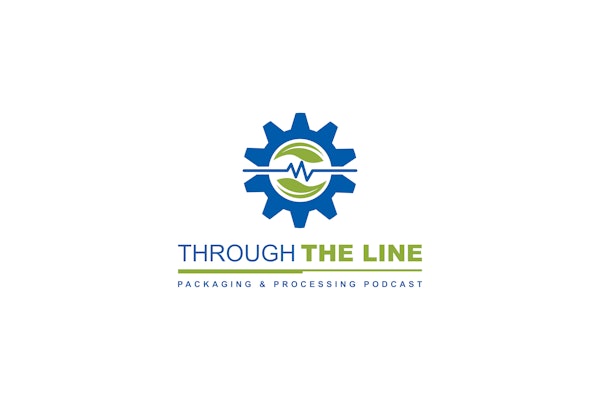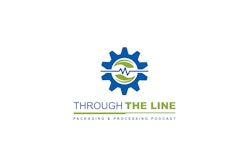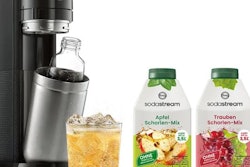Quick hits:
- Honeywell is launching its UpCycle advanced recycling program using such methodologies as molecular conversion, pyrolysis, and contaminants management to convert hard-to-recycle waste plastic back to Honeywell Recycled Polymer Feedstock.
- P&G’s Herbal Essences brand is an early adopter of Eastman’s Polyester Renew Technology (PRT or Renew for short), made from molecularly recycled material. The method is a form of depolymerization that breaks down polyester input materials into their molecular building blocks.
- Single-use plastic packaging has become public enemy number one. But it’s not the plastic that’s the problem; it’s the inability of mechanical systems to recycle many of them.
- The Consortium for Waste Circularity proposes that advanced, or molecular, recycling in the form of Regenerative Gasification should be used to convert mixed packaging waste that is difficult or impossible to recycle through mechanical means into syngas, a building block for chemicals, including plastics.
- Gasification is not a new technology. It is currently being done around the world, converting materials such as coal and natural gas into syngas for use by chemical companies. Packaging stakeholders must collaborate to drive investment in and support of gasification for mixed-plastic waste.
- P&G and Herbal Essences' PET Bottles Move to 50% Chemically Recycled PCR
- Honeywell Introduces Plastics Recycling Technology to Drive a Circular Plastics Economy
- Syngas is the Key to Packaging Sustainability
- Maine First State to Charge CPG Fee for Packaging Material Recycling: Incentives Offered for Use of Sustainable Materials
- Magnum Tub is First to Use Certified Circular Plastic
 | Read the transcript below: |
Anne Marie: Hello, this is Anne Marie Mohan, Senior Editor for Packaging World, with Take Five.
We’ve all heard of the ambitious commitments made by brand owners and retailers to reduce or eliminate single-use plastic packaging. Some of this will be forced on them, as legislators continue to put into place regulations such as Extended Producer Responsibility. These regulations also perpetuate the idea that mechanical recycling is the best and only route to handling packaging waste.
But what if eliminating plastics, which have a lower environmental footprint than other packaging materials for some applications, results in greater carbon emissions? What if the problem isn’t the plastics themselves, but our current waste handling options?
Recently, the Consortium for Waste Circularity held a webinar in which it proposed the use of an existing technology to fundamentally transform our waste handling system. And that is, regenerative gasification.
Regenerative Gasification is an advanced recycling technology that uses a molecular process, rather than a mechanical one, to transform mixed waste into synthesis gas. This syngas can then be converted into methanol, which is used to produce all types of plastics. Because the process breaks down all organic matter and regenerates the original carbon and hydrogen elements, the plastics made from the eco-methanol™ are inseparable from virgin plastics and are safe for use in food and beverage packaging.
The consortium explained that gasification would complement mechanical recycling, handling those materials, such as multilayer films, labels, fitments, shrink sleeves, and contaminated packaging, that mechanical recycling cannot. The existing logistical infrastructure could be used, with gasifiers built near landfills or incinerators. Then, instead of trash being landfilled or incinerated, it would be fed to the gasifier.
Gasification isn’t a new process. It’s being done around the world. But instead of being powered by mixed-waste materials, these facilities currently use coal, natural gas or biomass, with the resulting syngas used by chemical companies. CWC’s mission is to facilitate the adoption of this technology for packaging.
To learn more about CWC and Regenerative Gasification, go to pwgo.to/7416 for an article on the consortium’s recent webinar.
Matt Reynolds: And we’re back with more on advanced recycling.
Just a few weeks ago, Honeywell publicly launched what it calls its UpCycle process technology. Not to be confused with upcycling old milk gallons into durable carpet or swing sets, this is true molecular recycling that reduces the need for fossil fuels in creating virgin plastics, all the while enabling hundreds of recycling cycles.
I spoke to Honeywell’s Carrie Eppelheimer about the launch. She says UpCycle uses such methodologies as molecular conversion, pyrolysis, and contaminants management to convert waste plastic back to Honeywell Recycled Polymer Feedstock. That is then used to create new plastics that are, for all intents and purposes, equivalent to virgin.
Now, the proof in the pudding that advanced recycling technology is gaining momentum when the big brand owners get on board with real, commercialized projects that can be found on retail shelves.
Herbal Essences, one of Procter & Gamble’s most iconic personal care brands, just introduced five of its bio:renew line of shampoos and conditioners in primary packaging made from Eastman Renew resins with 50% certified recycled plastic. But how was the plastic recycled? You guessed it with advanced rather than mechanical techniques.
I asked Chris Layton at Eastman about this Polyester Renew Technology, or PRT or Renew for short. He says it’s more specifically a form of depolymerization that breaks down polyester input materials into their molecular building blocks, in this case dimethyl terathaylate and ethylene glycol.
These molecules are indistinguishable from the same molecules produced by fossil-based feedstock. Eastmen can then feed these recycled molecules into its existing manufacturing processes to produce a portfolio of specialty co-polyesters including one that goes into durable goods like Camelbak and Nalgene water bottles, appliances, medical devices, and electronics/auto applications. Or, it can go to PET bottles, like these new Procter & Gamble Herbal Essences bottles.
One last point that both Honeywell and Eastman stress: Advanced recycling methods aren’t intended to supplant or replace traditional mechanical recycling. If a piece of plastic waste can be readily recycled by traditional means, then it will continue to be. Advanced recycling technologies are meant to complement mechanical recycling by providing a stream for hard-to-recycle materials that otherwise would end up in landfill.
Clearly there are some exciting things happening in advanced recycling, but that’s all the time we have for now.
Interested in learning more about sustainable packaging? Download our free PDF today!

























